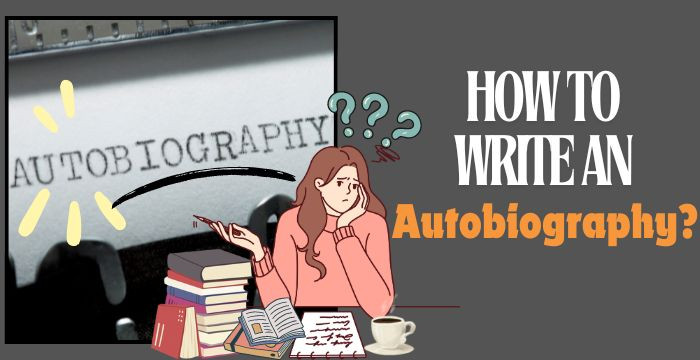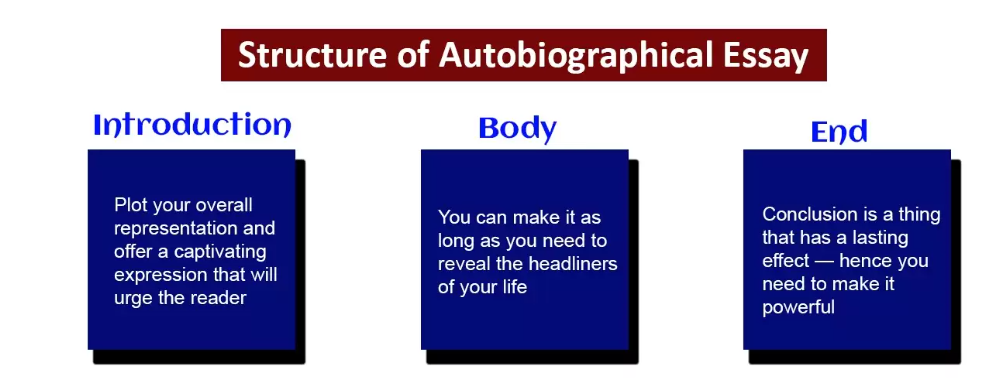
Writing an autobiography helps in exploring the treasures of memories that are filled with life. However, starting an autobiography can be overwhelming and can confuse where to start. How can we convert our memories into stories? If these types of questions are arising in your mind, then this blog will be a great help to you. No matter whether you are a beginner or an expert writer, the blog will break down the process of writing an autobiography with easy-to-follow rules. Together, we will make use of storytelling to turn your life into captivating reflective essays that will be completely yours. Therefore, let's start this journey.
What is an autobiography?
The autobiography can be assumed to be a written document containing the details of the individual's life. As the biography is written by someone else, an autobiography makes use of fresh-hand experience, helping the authors to share their memories, thoughts, and insights about their lives. Autobiography is a medium of self-expression for students and helps them convey their unique journey and lessons learned and create a long-lasting record in their own lives and that of others.

Figure Structure of Autobiography
Differences between autobiography and biography
The major difference between autobiography and biography lies in perspective and authorship. An autobiography is a personal account of the life of the individual written by themselves. It provides an intimate insight into the experience of emotions and reflections on the author's life. For example, in "The Diary of a Young Girl," the author Anne Frank provides autobiographical detail regarding the way she hid herself from the Nazis during World War II. However, on the other hand, a biography is a narrative of the life of someone else. Writing an autobiography requires a large amount of research and interviews to provide a comprehensive view. For instance, "Steve Jobs" by Walter Isaacson is a biography that is an in-depth portrayal of the lives of Apple co-founders based on interviews with Jobs and other people who know him. As both pieces of literature help in illuminating the incidence of life, the major difference lies in the type of narrative used.
Steps for writing an autobiography
Writing an autobiography is a rewarding and reflective way of sharing the experiences of a person by themselves. The autobiography can be written in very simple steps.
Step 1: Brainstorming and reflection
The autobiography should begin by reflecting on life and its important events, moments of growth, and challenges. It is important to prepare a mental inventory of important experiences and people who have influenced your life.
Step 2: Creating a focus
It is important to select a central theme for the autobiography. This could be anything from a certain period of life to significant achievements to any recurring theme that helps tie the experiences of life together. Having a clear focus is very important for writing an attractive autobiography.
Step 3: Creating a chronological order
Make a roughly chronological order of your life events, starting from the beginning and progressing over the years to the present time or any other crucial starting point. Every section should contain information regarding some important events and experiences in your life.
Step 4: Make use of emotions and details.
One of the most important aspects of writing an autobiography is appealing to the emotions of the readers. When developing different paragraphs of writing, they should contain vivid details regarding the events. The use of descriptive language can be very helpful in making the experience live for the readers. Making use of emotions and allowing the readers to connect with them can make the autobiography very captivating and appealing to the readers.
Step 5: Make use of a reflective conclusion.
When concluding an autobiography, it is important to summarize the key incidents of life. Reflect on the importance of your journey, the lessons you have learned during your life experiences, and the way they helped you grow. Also, provide insights regarding your current perspective and the aspirations you have for the future. This helps in providing a thoughtful conclusion to the autobiography.

Figure 2: Autobiography Outline
Essential tips for writing an autobiography
One of the most important tips to use is to make use of authentic words in the autobiography. It is important to be genuine, honest, and raw regarding the experiences, growth, and emotions of life. Authenticity helps in connecting with the reader more deeply and makes the story uniquely yours. It is also important to share the vulnerabilities of the writer, as it helps add a human touch and makes the autobiography more relatable. Sharing the lows and highs, struggles and triumphs helps in shining the true self to the readers. Honesty not only increases the impact of the autobiography but also helps in creating a more profound connection between the readers and yourself, resulting in the creation of a unique and memorable narrative. Some additional tips for writing an impactful autobiography are as follows:
- Essential Details: It is important to focus on key moments that significantly impact your story and not provide unnecessary details.
- Thematic cohesion: Explore the recurring themes to provide depth and coherence in the narrative.
- Authentic Expression: It is important to carry unique characteristics, such as voice, personality, and style, to create authentic content that will help connect with the readers and keep them engaged.
- Monologue and dialogue: Make use of genuine dialogues and monologues to provide details regarding your thoughts and emotions during significant moments in life.
- Symbolic elements: Make use of symbolic imagery and metaphors to describe deeper emotions and meanings.
- Strategic Foreshadowing: Making use of foreshadowing strategically to provide subtle hints helps in increasing the meaningfulness of the narrative.
- Reflective closure: The conclusion of the autobiography with a reflective summary helps in providing insights regarding the border significance of the journey presented in the autobiography.
Conclusion
Therefore, to write an attractive autobiography, assume it is a vivid picture of your life that others will see. An autobiography is all about being real, digging deep into the experiences and memories, and selecting the moments that are important for your life. Autobiography must help in revealing the personality of the writer. Make use of themes that help in tying all the things together, and use storytelling strategies to describe yourself, as it helps in making your story unique. When reaching the end of the autobiography, provide your readers with something to think about, such as reflection on any bigger lessons learned from the life journey. However, if you still need any kind of assistance with any type of college assignment, our experts at TheAssignmentNinjas are always here to provide you with the best services.


